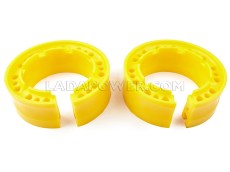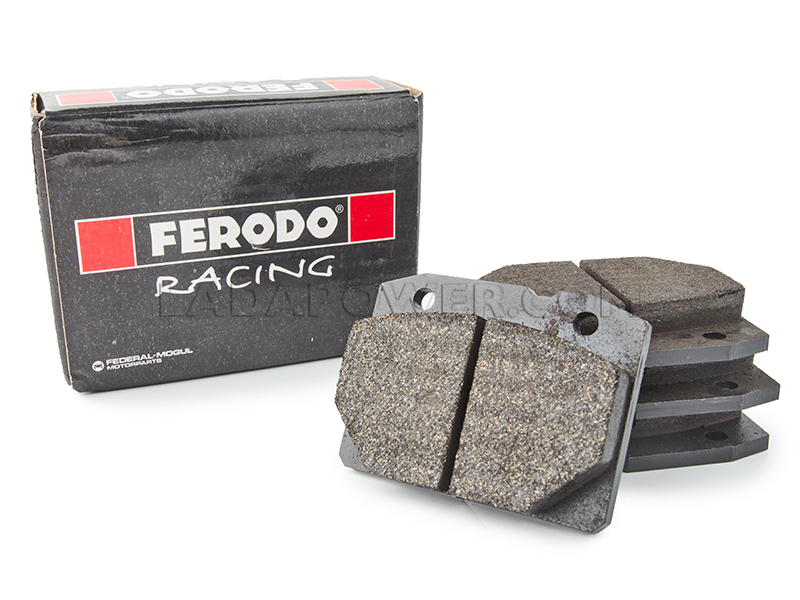MAIN APPLICATIONS: TC, Rally, Formula, Track car with OE brakes
MAIN FEATURES
• Heavy duty all-round material choice
• Short bedding time
• Applications: touring car, rally, Group N, single seat, hill-climb
• Average friction coefficient 0.48 over working temperature range of 200°-650°C
WARNING: DS3000 IS NOT SUITABLE FOR ROAD USE
FEATURES AND BENEFITS
ISO16949 & 14001 Certified Production
All Ferodo Racing brake pads are manufactured to the highest international ISO quality standards at Federal Mogul’s dedicated manufacturing facility in Italy. Every brake pad has a total of 26 separate quality controls during its manufacture which guarantee a repeatable and consistent product within and between every batch.
Precision Engineering
All of the pad back-plates are manufactured from high tensile steel meaning minimum distortion when subjected to the high clamping forces common in motorsport use. Pads are manufactured to maintain high tolerances on the pad and back-plate dimensions including: flatness, parallelism and overall thickness. This results in a rapid and uniform transmission of pressure from the brake system to the pads.
Thermal Under-layer
Unlike many competitive products most Ferodo Racing brake pads incorporate a thermal under-layer between the backing-plate and the friction material. This reduces the brake caliper’s operating temperature by up to 80 deg C and significantly reduces the risk of boiling the brake fluid which causes a “spongy” feeling in the pedal.
Disc Friendly
Unlike many competitive products Ferodo pads are kind on brake discs. Ferodo pads are developed to optimize both the pad and disc life. Our philosophy is not to increase pad life with the casualty of excessive disc wear.
High Controllability
All Ferodo Racing brake pads are engineered to perform with a relatively constant coefficient of friction (mu) across a wide range of temperatures, pressures and vehicle speeds. This results in a consistent brake feel for the driver meaning that the braking torque is a linear response to pedal pressure.
Wide Range of Material choices and Fitments
Ferodo Racing has one of the widest range of pad shapes in the racing/performance brake pad market. This fitment range is available with the necessary compound choice meaning that there is nearly always a solution to your needs.
PAD BEDDING
The aim of bedding is to bring the pads to full race temperatures, but gradually; too quickly results in glazing. It is important that the pads are allowed to cool between the bedding and racing, but if time does not allow, they can be used immediately though less product life - possibly 10% - should be expected.
HOW TO DO THE BEDDING
Perform at least 15 trial brake applications, initially with reduced pressures (around 50% of the normal that might be used for that same brake application were it to occur under race conditions) building up to full decelerations after the 15 applications. To shorten the procedure applications can be made along the straights as well as at corners.
Ideally the pads will arrive at temperatures in excess of 500°C during the bedding.
Pads have undergone an intense thermal treatment up to full bedding temperatures during their production. In this case the same general procedure above is to be applied but arriving at the 500°C target temperature is not critical. The number of applications may also be reduced. In these thermally treated compounds, bedding is required only as mechanical mating of pad and disc.
It may be necessary to close cooling ducts during the bedding to achieve sufficiently high temperatures.
On completion of the trial applications, return to a service point and let the pads cool and then inspect the surface of the brake pads from the two wheels that have been working the hardest. There should be evidence of contact over at least 80% of the pad area, but without glazing.
The pads are now ready to race.
Whilst it is recommended that pads are inspected after bedding, time may not allow this. But as long as the gradual build-up procedure has been carried out correctly and a short period of time has elapsed to allow the brake system to cool (ideally to below 100°C - this might take in excess of five minutes), the pads will be ready to race.
To illustrate these principles please consider the figures below:
Figure 1: data from a GT3 car during bedding
Figure 2: data from the same car under race conditions (same circuit)
Red plot: brake pressure against time; Green plot: disc temperature against time
Red plots: brake pressures during the bedding-in cycle at around 50% of those seen in race conditions. The gradual build-up of temperature during the bedding can be seen peaking at 580°C, which is quite close to the full race temperature.








